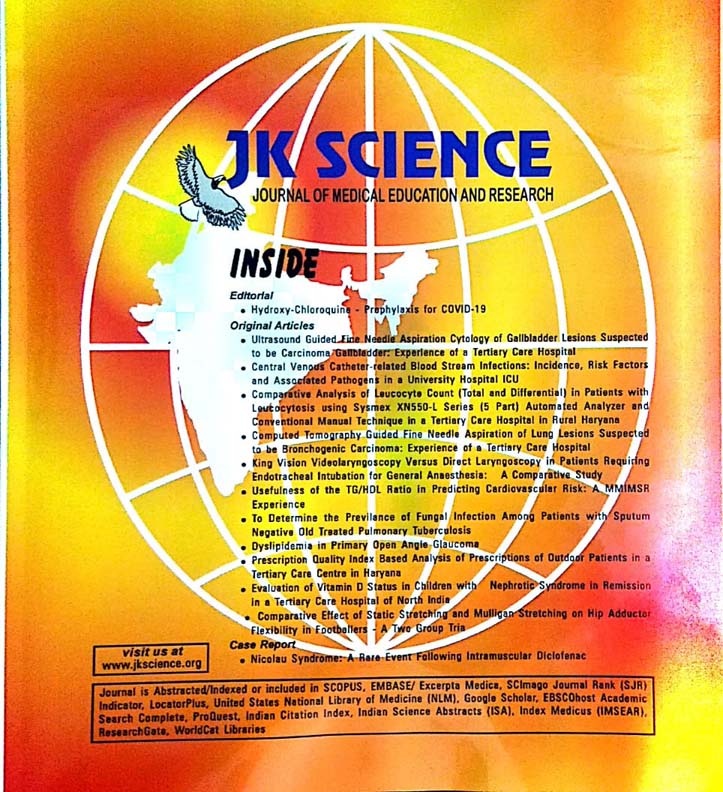Comparative Evaluation of Efficacy of Midazolam and Dexmedetomidine as Premedicants in Children Undergoing Elective Surgery
Keywords:
Dexmedetomidine, Intranasal, Midazolam, Pediatric patientsAbstract
Background: Drugs like midazolam and dexmedetomidine can allay anxiety when used as premedicants in children. Intranasal route offers the advantage of rapid and virtually complete absorption due to high mucosal vascularity.
Objective: The aim of the study was to compare the effect of midazolam with dexmedetomidine for intranasal premedication in paediatric patients posted for elective surgery.
Material and Methods: One hundred and five children of either sex, aged between 2-8 years undergoing elective surgery were randomly assigned to one of the three study groups. Group M (n=35) received 0.5 ml of 0.2 mg/kg midazolam, Group D (n=35) received 0.5 ml 1µg/kg dexmedetomidine and Group C (n=35) received 0.5 ml of normal saline in each nostril 40 minutes before induction of anesthesia. Heart rate, blood pressure, SpO2, degree of sedation was measured every 10 minutes till 30 minutes according to the 5- point sedation scale. The reaction to intravenous (i.v.) cannulation was noted according to 4-point scale and face mask acceptance by the child was noted according to 5-point scale. After induction of anesthesia, vitals were noted every 10 minutes, intraoperatively. Postoperatively, level of sedation was assessed every 10 minutes for one hour using 3- point scale.
Results: The difference in sedation score between group M and D was insignificant at 10 minutes but highly significant at 20 min, 30 min and 40 minutes with more sedation in dexmedetomidine group. Heart rate and blood pressure were lower in dexmedetomidine group. Children in group D had better reaction to i.v. cannulation and mask acceptance scores compared with group M (midazolam). Postoperative sedation was highest in group D and these children had better wake up scores than midazolam.
Conclusion: Compared to midazolam, intranasal dexmedetomidine provides higher sedation level, better mask acceptance and better response to intravenous cannulation.
Downloads
Downloads
Published
How to Cite
Issue
Section
License
Copyright (c) 2021 JK Science: Journal of Medical Education & Research

This work is licensed under a Creative Commons Attribution-NonCommercial-ShareAlike 4.0 International License.





